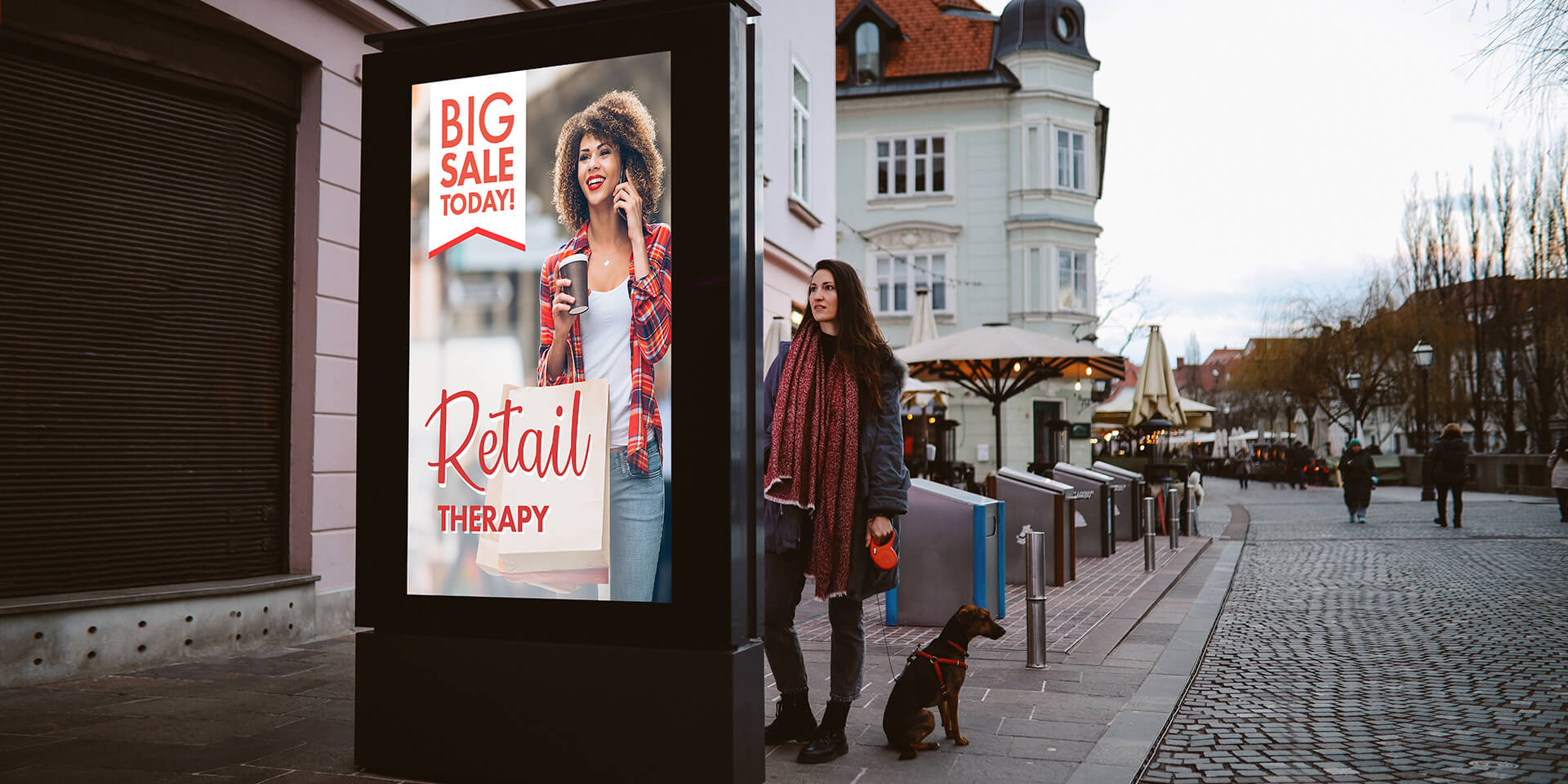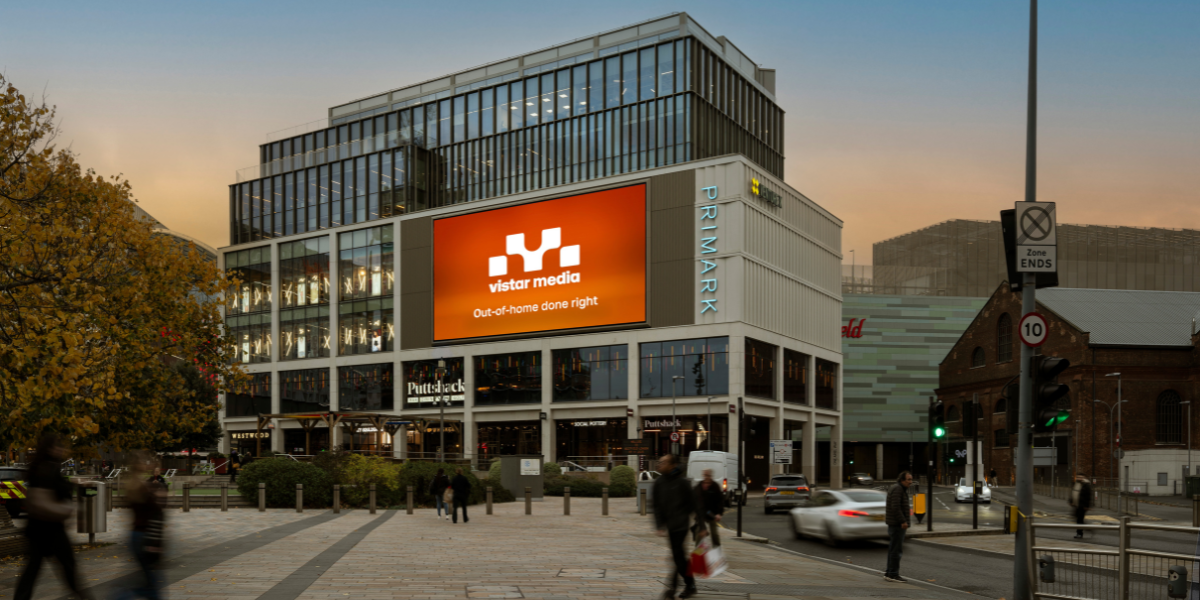
Marketers are constantly looking for new and data-driven ways to advertise their products among their target audiences. But, in such a highly cluttered digital advertising world, how can brands influence consumers’ perceptions and buying behaviors, in the real-world, with high-impact activations? Enter digital out-of-home.
Digital out-of-home (DOOH) provides the same benefits as other forms of digital media, with the added advantage of reaching consumers, at scale, while they have the opportunity to act on an impulse triggered by a well-placed ad. This medium has evolved its technology to be driven by data, providing marketers with both mass reach and precision targeting, as well as offline measurement. Vistar’s latest resource, the ultimate guide to DOOH, provides an in-depth walkthrough of the DOOH landscape — including the nuances of out-of-home, advanced audience and measurement capabilities, and strategies for incorporating the medium into any omnichannel marketing strategy.
Since DOOH’s benefits are plentiful, below we’ve highlighted a few of the top items marketers must know about the channel.
1. Leverage data-driven audience solutions.
Savvy marketers consistently choose DOOH as a medium of choice due to its robust data capabilities and the ability to easily extend their strategies across other digital channels. Using GPS location data, brands can define and activate audiences based on the locations consumers visit. Through Vistar’s geospatial data analysis, marketers can understand when and where their target segments are most likely to be throughout their day.
In addition to these capabilities, brands can take advantage of first- and third-party data to reach their target audiences. Marketers can create their own audiences using first-party data from their CRM of choice, or utilize one of Vistar’s data partners, such as Foursquare and Pushspring, for OOH targeting.
Brands can also tap into advanced targeting tactics, such as time of day, day or week, geo-targeting or POI/radius targeting. For a deeper understanding of how these data suites work, download our guide to audience and targeting strategies.
2. Connect the consumer journey across the entire shopper journey.
DOOH is instrumental in bridging the consumer journey. Using programmatic out-of-home, marketers can easily reach their audiences, at scale, in their natural environments while they are away from home and their devices. From screens inside of grocery stores, pharmacies and gas stations, to electric vehicle charging stations, billboards and bus shelters, OOH allows brands to seamlessly integrate their products and services into a consumer’s daily routine.
With Vistar’s unrivaled DOOH scale, brands can connect multiple touchpoints throughout the consumer journey using a variety of screen types. Both contextual environments and repeated exposure have proven to drive lift in brand awareness, consideration, purchase intent, foot traffic and sales. In addition to the benefits of DOOH alone, the option to retarget consumers exposed to DOOH on mobile opens even greater opportunities for marketers to reinforce their brand messaging. Further, with Vistar’s device ID passback solution, marketers can receive the device IDs of those exposed to their DOOH campaign for cross-channel retargeting or in-house measurement.
3. Take advantage of real-world measurement that drives real-world results.
Measurement within the OOH industry used to be a challenge, but with recent advancements in both data and technology, marketers can now rely on trustworthy solutions for measuring their campaigns. Further, Vistar recently partnered with the Out of Home Advertising Association to create a standardized guide to measuring exposed mobile IDs, ensuring accurate and transparent metrics for advertisers.
While other forms of media are suited to drive either upper or lower-funnel metrics, DOOH has the power to improve a brand’s position across all major KPIs. Using exposure-based methodologies, marketers can evaluate the impact of their out-of-home initiatives through the use of brand studies, foot traffic studies, in-store and post visitation studies, and sales lift studies.
4. Deploy high-impact creatives that can’t be replicated through other channels.
DOOH also appeals to marketers because it can provide unmatchable, high-impact placements that are unaffected by some of the issues attached to digital advertising (bots, viewability, and brand safety, to name a few). Whether a brand activates large format displays that use a flashy creative to garner attention or place-based screens that live in contextually relevant environments, DOOH is a public and striking format for reaching target audiences.
Ultimately, DOOH is an incredibly effective and powerful marketing tool. Innovation within the OOH industry has led to advancements such as available first- and third-party data as well as out-of-the-box creative, which all drive the medium’s success.

%20(1).png)


